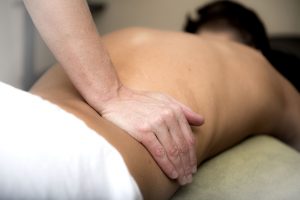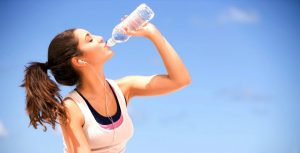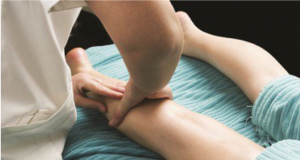An Alternative Approach to Stretching
Clinicians, athletes and rehabilitation specialists advocate stretching as a means for injury prevention and treatment. The primary purpose of any stretching technique is to enhance pliability and flexibility in the soft tissues. It is also routinely incorporated with massage in the treatment of pain and injury conditions. There are many different stretching techniques, which all fall into one of three primary categories: static, ballistic or active-assisted stretching.
Static stretching is the most common. In static stretching, you bring the target muscle into a lengthened position and hold it there until you have achieved the desired stretch. The ideal length of time to hold a static stretch is debated in the literature and the results appear inconclusive. Somewhere around 15 to 20 seconds is a common time frame that achieves good clinical results.
Ballistic stretching is used most commonly in the athletic environment. During a ballistic stretch, you bob or bounce into a stretch to encourage tissue elongation in the muscle. Ballistic stretching works by using the momentum of the moving limb to extend past the initial limitation of range of motion. Many people oppose the use of ballistic stretching because the rapid elongation of muscle tissue in the bouncing motion can activate the stretch reflex, which would be counterproductive to stretching.
In active-assisted stretching, the client actively engages a specific muscle contraction prior to, or during, the stretching procedure. There is a variety of active-assisted techniques and they go by different names such as PNF, muscle-energy technique, active isolated stretching or facilitated stretching. There are slight variations in each of these methods, but they are all based on the neurological principles of post-isometric relaxation (PIR) and reciprocal inhibition. Experiments that compare active-assisted methods with static or ballistic stretching show the greatest range of motion gains with active-assisted methods.
Immediately following an isometric contraction, there is an increased degree of relaxation in that same muscle. This immediate reduction in neurological activity is called the post-isometric relaxation (PIR). The methods of active-assisted stretching use the window of reduced neurological activity during the PIR to engage a stretch of the target muscle after it has isometrically contracted. Stretching during the PIR is more effective than stretching without the prior isometric contraction.
The other neurological principle that is of important in active-assisted stretching methods is reciprocal inhibition. When an agonist (target) muscle contracts, there is a neurological inhibition of its antagonist (opposite) muscle. The reduction in neurological activity in the antagonist muscle is called reciprocal inhibition. Because reciprocal inhibition decreases neurological activity in muscles opposite the ones being contracted, it is helpful to use during stretching procedures. Stretching of the target muscle is enhanced when its opposite muscle is contracted at the same time (Fig. 1).
The various techniques of active-assisted stretching advocate different lengths of time to hold the isometric contraction prior to stretch. Initial research has indicated that a relatively short period of nonmaximal isometric contraction (about 3 seconds) seems most effective for holding the contraction prior to stretch.1 These methods also vary in the length of time that the stretch is held. A study investigating active-assisted stretching compared stretch duration times of 3 seconds and 30 seconds and found no significant difference in the outcomes between the two time periods.2 More research is needed to determine the ideal stretching method(s). It may turn out that the optimum stretching method depends on the situation in which it is being used.
Effective Stretching Procedures
 Hamstring stretching with reciprocal inhibition. During this hamstring stretch the practitioner will engage the hip flexors concentrically by attempting to further flex the hip. Engaging the hip flexors causes reciprocal inhibition of the hamstring group (the target muscle to be stretched). Each of the stretching procedures mentioned above must take into account the biomechanical and neurological properties of the myofascial unit. Therefore, all stretching procedures engage two primary components: the physical stretch of muscle and connective tissue (mechanical effects) as well as the reduction in neurological resistance to stretch (neuromuscular effects).
Hamstring stretching with reciprocal inhibition. During this hamstring stretch the practitioner will engage the hip flexors concentrically by attempting to further flex the hip. Engaging the hip flexors causes reciprocal inhibition of the hamstring group (the target muscle to be stretched). Each of the stretching procedures mentioned above must take into account the biomechanical and neurological properties of the myofascial unit. Therefore, all stretching procedures engage two primary components: the physical stretch of muscle and connective tissue (mechanical effects) as well as the reduction in neurological resistance to stretch (neuromuscular effects).
Fascia is interwoven throughout muscles in an extensive network. It has viscous properties that respond better to slow, sustained tensile loads and resist rapid elongation.3 The process of connective tissue gradually lengthening when a sustained stretch is applied to it is called creep. The extensive fascial network running through all muscles suggests greater benefit for longer-duration stretching methods to take advantage of connective-tissue creep.
The neurological resistance to stretch is primarily governed by a specialized proprioceptor called the muscle spindle. It is responsive to both the rate of muscle stretching and the amount of stretch in the tissue. If the muscle is stretched too fast or too far, the muscle spindle sends signals to the central nervous system and an immediate muscle contraction is engaged to prevent overstretching. This immediate muscle contraction is called the myotatic (or stretch) reflex. Stretching procedures attempt to minimize any recruitment of the stretch reflex.
An Alternative Method
 Enhancing a hamstring stretch. The practitioner uses one hand to hold the limb in the stretched position and the other hand applies the fascial elongation technique to the target muscle group (hamstrings).
Enhancing a hamstring stretch. The practitioner uses one hand to hold the limb in the stretched position and the other hand applies the fascial elongation technique to the target muscle group (hamstrings).
(Photo courtesy of Bob McAtee) Manual-therapy practitioners have been excited by recent research studies enhancing our understanding of the physiological properties of fascia. We have recently learned that fascia contains contractile cells and is capable of releasing its contraction and further elongating when a prolonged tensile load is applied to it.4 Armed with this new understanding, we can use the physiological properties of fascia to enhance stretching procedures. Combining active-assisted stretching methods with fascial-elongation methods would address both the neuromuscular and connective-tissue components of the stretching process.
Consider hamstring stretching as an example of how this works. Engage the hamstrings in a short 3-second nonmaximal contraction. Release the contraction and bring the hamstrings into a stretched position (Fig. 2). Have the individual attempt to further stretch the hamstrings by attempting to flex the hip as far as possible (as they did in Fig. 1). This movement engages the reciprocal inhibition process and encourages further lengthening. While this position is held, apply a myofascial-stretch technique (with the hand or back side of the fist) to the hamstrings and hold it for about 30 to 60 seconds. Holding the myofascial stretch encourages relaxation of the fascial contractile cells and enhances connective tissue creep.
Both the neuromuscular and connective-tissue components of the stretch are emphasized by combining these myofascial and active-assisted stretching techniques. I have found this stretching method helpful with a number of chronically tight muscles. In the future, it will be valuable to perform comparative studies with this and other stretching techniques to find out which ones are most effective under various clinical circumstances.
References
- Sharman MJ, Cresswell AG, Riek S. Proprioceptive neuromuscular facilitation stretching: mechanisms and clinical implications. Sports Med 2006;36(11):929-39.
- Smith M, Fryer G. A comparison of two muscle energy techniques for increasing flexibility of the hamstring muscle group. J Bodyw Mov Ther Oct 2008;12(4):312-7.
- Taylor DC, Dalton JD, Jr., Seaber AV, Garrett WE, Jr. Viscoelastic properties of muscle-tendon units. The biomechanical effects of stretching. Am J Sports Med May-Jun 1990;18(3):300-9.
- Schleip R. Fascial plasticity: a new neurobiological explanation. J Bodyw Mov Ther 2003;7(1):11-9.
Ready to #feelbetter?
You're just a click away from a wicked good massage!
-

60 Minute Massage Gift Card
$170.00 Add to cart -

90 Minute Massage Gift Card
$255.00 Add to cart -

Mini Aer Small Room Air Purifier
$149.00 Add to cart -
Sale!

Thera-Pearl Sports Pack/Hot Cold
Original price was: $14.99.$12.99Current price is: $12.99. Add to cart -

3 Somadome Sessions Gift Card
$135.00 Add to cart -

20 Minute Somadome Gift Card
$45.00 Add to cart -
Sale!

TheraBand® Stretch Strap
Original price was: $19.99.$14.99Current price is: $14.99. Add to cart -

TheraBand CLX Connective Loop
$14.99 Select options
Energy Boosters
Energy Boosters Ways to Get You Through the Day No amount of coaxing, pleading, or pedal pumping could get the engine in the rental car to turn over. It was going nowhere. The travelers had filled the car with unleaded fuel, but it had a diesel engine. It had been able to run a little…
Read MoreWhat is Qi?
What is Qi? A fundamental concept of traditional Chinese medicine (TCM) dating back over 3,000 years, qi (pronounced “chee”) is the Chinese word for energy, which also carries with it connotations of “air,” “breath,” and “life force.” In TCM, it is understood that everything from humans and animals to rocks and trees is filled with…
Read MoreWhy Buy Organic?
Why Buy Organic? Is the Higher Price Worth It? While shopping in your grocery store’s produce section, you may notice the organically grown apples are pocked and not as big and perfectly round as the conventional produce, but they are more expensive. What’s the difference, and which do you choose? Your decision may significantly impact…
Read MoreAre You Making the Most of Your Massage?
Are You Making the Most of Your Massage? How to Prolong the Benefits of Bodywork A massage works in wonderful ways, easing stress and pain, calming the nervous system, increasing circulation, loosening tight muscles, stimulating internal organs, and enhancing skin. The multiplicity of physiological responses sends a simple, clear message to the mind: Massage feels…
Read MoreThe Case for Chocolate
The Case for Chocolate New Studies Show Health Benefits It’s not like we need a specific reason to eat chocolate, but it doesn’t hurt that studies are finding increasing health benefits associated with the popular indulgence. While chocolate is high in sugar and saturated fat, it does contain chemical compounds with proven benefits, so enjoy–in…
Read MoreThe Wonders of Water
The Wonders of Water For Skin Health and More Shelley Burns, N.D. Creams, nutritional supplements, treatments, lotions, and potions. We are always looking for the next miracle product to keep skin looking healthy and young. However, there is one essential, inexpensive, and often overlooked nutrient right at your fingertips:water. Just as a car cannot function…
Read MoreInvest In Your Health
Invest in Your Health Massage Offers Excellent Return onInvestment “Invest for the long term” is great financial advice, but it’s also great healthcare advice. Never is investing for the long term more important than when you are making day-to-day decisions about your health. There are short-term gains from taking care of your health, to be…
Read MoreLife Hack: Iced Cubes
Life Hack: Coffee Cubes (Redux) As usual in New England, we have gone from Winter to Summer, with Spring being an absentee season (again). Since it feels like Summer is already here, I thought it best to give you a Life Hack that is an oldy, but a goody! Iced Coffee…..CUBES! #mindblown Yes. I have offered this…
Read MoreMake a Great Save to Avoid Back Pain
Make a Great Save to Avoid Back Pain 7- Stretches in 7-Minutes I was speaking the other day with one of our therapists and we were discussing our role in helping our patients. I was explaining that a comment I often tell new patients is; “These are hands, not magic wands”. Patients often seek out…
Read MoreTime for Sleep
Time for Sleep As a nation, we may be divided, but there is one common bond that unites us all around the world; sleep. We all need sleep in order to be capable of performing every day tasks. Sleep is an imperative part of the human experience. Without a good night’s sleep, our bodies will slowly…
Read More









